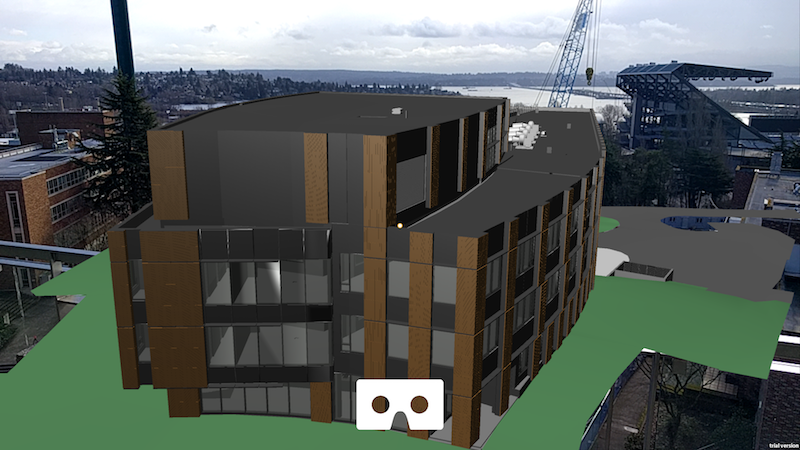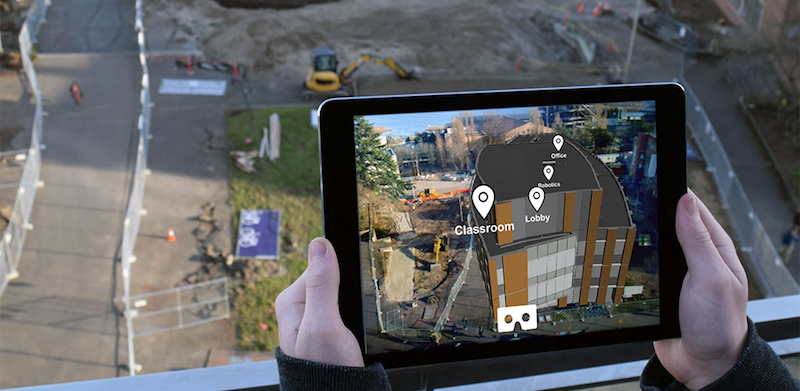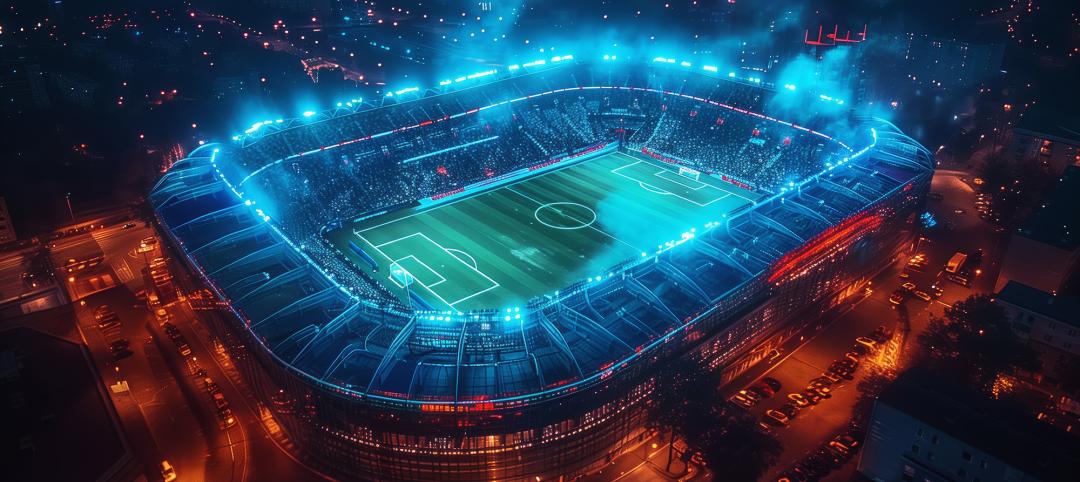Mortenson Construction has been in the vanguard of AEC firms using virtual reality as a tool for designing and building.
As far back as 2000, Mortenson’s Seattle office leaned on virtual design and construction modeling for the Frank Gehry-designed Walt Disney Concert Hall in Los Angeles.
More recently, the firm applied a technology it developed called Computerized Automatic Virtual Environment—CAVE for short—that, in 2013, helped the Building Team on the Pegula Ice Arena at Penn State University identify changes during the design stage, thereby averting $475,000 in costs. VR also helped shave $1.7 million in costs from the construction of the new Atlanta Braves stadium.
For the past 18 months, the firm's Immersive Technology group has been exploring possible construction-related opportunities for augmented reality (AR). Last year, Mortenson was among the first companies to partner with Daqri to test the application of its augmented reality-smart work helmet for construction jobsites. And in March, Mortenson went live with what it’s claiming is a first-of-its-kind AR mobile app that allows users to “see” what the second building of the Paul G. Allen Center for Computer Sciences and Engineering at the University of Washington in Seattle will look like, many months before its scheduled completion in January 2019.
Last January, the university’s Board of Regents authorized the start of construction for the 135,000-sf second building, which will be a much-needed addition to the Center where, since its first building opened in 2003, has seen its undergraduate and graduate computer science and engineering students increase by 50%, as has its faculty. UW reports that it currently has room for only 40% of the students who satisfy prerequisites and apply for computer science or computer engineering majors.
Mortenson was involved in the construction of the Center’s first building.

The AR app was developed to create excitement around this 135,000-sf building, which UW needs desperately to accommodate what has been a significant increase in students who want to major in computer science and engineering. Image: Mortenson Construction
Marc Kinsman, Mortenson’s Immersive Technology Developer, led the in-house team that developed the app. He says its purpose is to generate excitement about this project among the University of Washington community during construction. (He notes that the university removed a popular thoroughfare to “squeeze in” the new building, and anticipated some blowback from students and faculty.) The new AR mobile app, which is available for download onto iPhone and Android devices, lets users point their smartphones at the construction site on campus, or at a printed handout, to see a digital representation of the future building. Users can experience the exterior via AR, and then use VR to delve deeper into the building’s main lobby, workroom, robotics lab, and offices.
This building will include a 250-person lecture hall, seminar rooms, and conference facilities, as well as classrooms, lab space, and workrooms for faculty, students, and researchers.
“This window presents a tremendous opportunity to engage the public,” says Kinsman, who adds that VR and AR are “vast improvements” over traditional public engagement methods such as flyers, signage, or even websites. So far, the number of downloads has been modest, but Kinsman attributes that to a lack of marketing in the initial rollout.
That being said, this project has already attracted considerable attention. Its $105 million price tag will be funded by public and private sources that include Microsoft ($20 million), the state of Washington ($32.5 million), the University of Washington ($9 million), Amazon and Google ($10 million each), and Zillow ($5 million).
Kinsman says that Mortenson is planning to make available the AR app for future projects that include corporate campuses in Seattle and Portland, Ore.
Related Stories
Sports and Recreational Facilities | Jul 15, 2024
Smart stadiums: The future of sports and entertainment venues
These digitally-enhanced and connected spaces are designed to revolutionize the fan experience, enhance safety, and optimize operational efficiency, according to SSR's Will Maxwell, Smart Building Consultant.
Healthcare Facilities | Jun 18, 2024
A healthcare simulation technology consultant can save time, money, and headaches
As the demand for skilled healthcare professionals continues to rise, healthcare simulation is playing an increasingly vital role in the skill development, compliance, and continuing education of the clinical workforce.
K-12 Schools | Apr 29, 2024
Tomorrow's classrooms: Designing schools for the digital age
In a world where technology’s rapid pace has reshaped how we live, work, and communicate, it should be no surprise that it’s also changing the PreK-12 education landscape.
Products and Materials | Mar 31, 2024
Top building products for March 2024
BD+C Editors break down March's top 15 building products, from multifamily-focused electronic locks to recyclable plastic panels.
AEC Tech | Jan 8, 2024
What's driving the surge of digital transformation in AEC today?
For centuries, the AEC industry has clung to traditional methods and legacy processes—seated patterns that have bred resistance to change. This has made the adoption of new technologies a slow and hesitant process.
Digital Twin | Jul 17, 2023
Unlocking the power of digital twins: Maximizing success with OKRs
To effectively capitalize on digital twin technology, owners can align their efforts using objectives and key results (OKRs).
Virtual Reality | Jun 16, 2023
Can a VR-enabled AEC Firm transform building projects?
With the aid of virtual reality and 3D visualization technologies, designers, consultants, and their clients can envision a place as though the project were in a later stage.
AEC Tech | May 9, 2023
4 insights on building product manufacturers getting ‘smart’
Overall, half of building product manufacturers plan to invest in one or more areas of technology in the next three years.
Sustainability | May 1, 2023
Increased focus on sustainability is good for business and attracting employees
A recent study, 2023 State of Design & Make by software developer Autodesk, contains some interesting takeaways for the design and construction industry. Respondents to a survey of industry leaders from the architecture, engineering, construction, product design, manufacturing, and entertainment spheres strongly support the idea that improving their organization’s sustainability practices is good for business.
Affordable Housing | Mar 8, 2023
7 affordable housing developments built near historic districts, community ties
While some new multifamily developments strive for modernity, others choose to retain historic aesthetics.

















